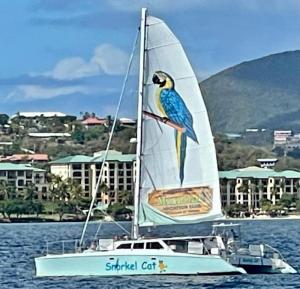Bold sketching genius, blue-crowned motmots and cruise ships
Lewes artist Abraxas said the edges of my clouds weren’t strong enough, the smudges of pencil shadings that gave the clouds depth weren’t smudgy enough.
“Be bold man,” he said. “Bold is genius!”
The sketching class took place in his Second Street studio, surrounded by his vibrant paintings, many of them coastal scenes in the dunes and water of nearby Delaware Bay and Atlantic Ocean.
When Abraxas paints storms around lighthouses or the World War Two fire towers used by the Army to triangulate and accurately target the big guns that helped protect the shipping lanes of Delaware Bay - now historic and distinguishing landmarks along the coast - it didn’t take classic bolts of lightning to clue the viewer that those thick and angry clouds were as heavily charged as the guns once were. But that didn’t stop Abraxas. He doesn’t shy from adding lightning bolts anyway. If anything as silent as a painting can crackle, Abraxas’s bolts do just that.
Surreal is bold. Surreal is genius.
Though I wasn’t among his star pupils, I nonetheless enjoyed what I learned about sketching with pencils. His bold statement has remained with me ever since.
In fact, it came to mind one afternoon in early February when a fortunate few of us were ferrying back to St. Thomas from St. John in the US Virgin Islands. Fortunate because most everyone who ever spends time on St. John can count themselves as fortunate.
The smallest of the three US Virgins - the other is distant St. Croix - St. John is 75 percent national park with beautiful beaches, crystal clear blue water, thousands and thousands of acres of semi-mountainous tropical forests riddled with hiking trails, and dependable sunshine nestled in the tropical Caribbean bringing year-round warmth.
Yes, it gets nailed from time to time by shockingly powerful hurricanes, but its people and vegetation show equal parts resilience.
But I digress.
Ferrying across the waters toward St. Thomas and its airport, a catamaran passed in front of us at a respectable distance. The easterly blowing trade winds blew all wrinkles out of its mainsail. But what really caught my eye was a forty-foot tall parrot painted from top to bottom on the white canvas. Colorful and bold, a hundred times larger than the real bird.
My mind went to Nicaragua with its strong artistic tradition. On a visit there several years back, we bought a painting of the national bird - the blue-crowned mot mot - that we were lucky enough to see in the wild. The bird is small, not much larger than a robin, but its colors are stunning. Its distinctive, long-hanging tail with two circular feather pendants can’t help but turn your head again and again.
The painting captured the perching bird in all its glory, but what really makes it is the fact that the artist painted it - as did the parrot artist - many many times larger than its actual size. About three feet tall.
The painting hangs in the downstairs bathroom of one daughter’s house and makes me linger there far longer than would an old LL Bean catalog.
The catamaran parrot and the blue-crowned motmot remind me of Abraxas’ admonition.
But so too, in a much different fashion, did the cruise ship known as the Harmony of the Seas.
With corona still rearing its ugly head during our island visit, we wondered whether we would see any of the popular ships docked in St. Thomas. The answer came quickly when we rounded a rocky and green headland and the Charlotte Amalie harbor came into view.
Looking like a glittering condominium and hotel complex along the Miami Beach oceanfront, the sheer size of the Royal Carribean cruise ship widened our eyes. It took visual scanning from stern to bow to take it all in.
Quick research on the internet informed us that when she launched in 2016, Harmony of the Seas became the world’s largest cruise ship afloat. At more than 1,100 feet in length and 180 or so feet of beam, the vessel has a passenger capacity of about 6,000 with a crew of 2,300. She’s a floating city, a longitudinal high-rise of several stories featuring 46 restaurants, 22 lounges and bars, pools, waterslides and loads more to keep island-hopping tourists smiling and happy.
Our research also informed us that Royal Caribbean one-upped itself in 2018 when it launched its Symphony of the Seas. At a couple hundred feet longer, it immediately eclipsed the Harmony of the Seas as the world’s largest cruise ship. Might as well have number one and number two, right?
The economic impact of such cruise ships on islands like St. Thomas and St. John is prodigious.
One might even say bold.

























































